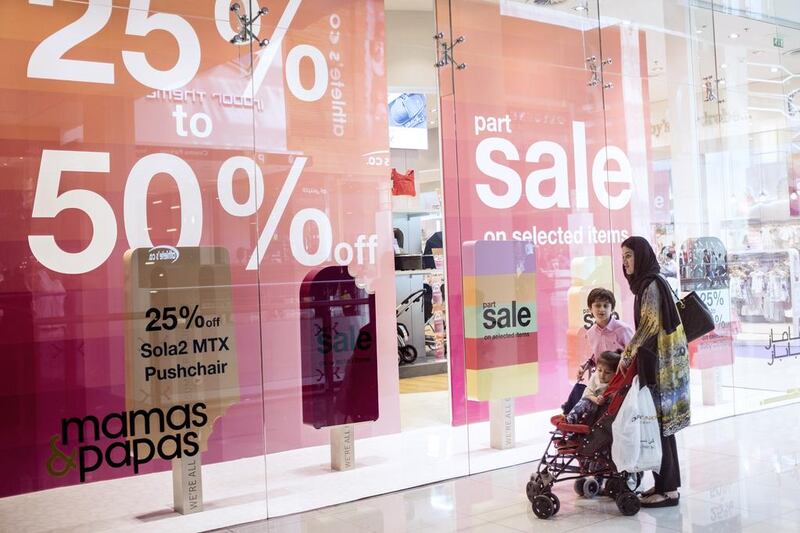The outlook for retailers in the UAE and wider Middle East is uncertain as margins come under increasing pressure amid a weak economy, according to participants at the Middle East Retail Forum yesterday.
The retail sector is being buffeted by a variety of global factors, including soft oil prices, a strong dollar making the UAE more expensive and key markets such as Russia, China and the UK facing sluggish economies.
According to the management and consulting firm Bain & Company in Dubai, data from the Saudi Central Bank showed that cash taken from ATMs across the country fell by 5 per cent in the first quarter of the year.
“Even if oil comes back to the levels we knew over the past 10 years, the profits in retail that we saw then will not [be the same] because the UAE is now a mature market,” Cyrille Fabre, a partner at Bain & Company, told the forum.
“Margins will fall because the disposable income of consumers is shrinking or flat. We also have rising inflation and we have value added tax on the horizon, which affects sentiment as much as physical sales.”
Even Majid Al Futtaim – Fashion, one of the UAE’s biggest retail kingpins, which has 135 outlets across the Mena region, has experienced its sales falling in its older branded stores as customers look for newer concepts and other brands cannibalise its once pre-eminent position.
But high mall rents are not a contributory factor to the falling sales, according to Majid Al Futtaim (Maf).
“The service of a mall is to provide footfall and if you look at our big malls we are bringing more footfall and we have retailers waiting to enter,” said Rajiv Suri, the chief executive of Maf Fashion. “Our sales are diminishing by single digits among our older brands, but growing in the newer concepts. We believe in this market and are expanding our retail portfolio where we are not present, such as shoes, sports and home furnishings.”
While Dubai’s mature retail market has a challenging year ahead, other parts of the UAE, such as Abu Dhabi, are providing an avenue of opportunity because of the room for development. Saudi Arabia is regarded equally as an untapped market that has a domestic demand with relatively high disposable income.
“While Dubai is a saturated retail market, there are other neighbouring opportunities that global retailers are now seriously looking into,” said Shamail Siddiqi, a principal at AT Kearney Middle East. “While Dubai’s demand dynamic allowed a 20 per cent to 30 per cent mark-up on its products, that is not now the case and other cities are looking more attractive. However, the investment going forward is in the hope rather than expectation of a retail surge. Retailers are scared because they don’t know whether to stick or pivot.”
Many of the forum’s bricks and mortar operators are buckling in for the long haul, but the regional online retailer Souq.com has had increasing traffic to the site, increasing numbers of third party merchants, with sales as well as like-for-like profits. It would seem the virtual space is a far happier market than the actual.
“Souq.com’s sales have increased by strong double digits,” said Ronaldo Mouchawar, its co founder and chief executive. “We have opened up new categories and opened up a new logistics centre for smaller e-commerce players, like Uber for logistics, which is another revenue stream. With regard to the retail economic climate, I can feel our customers are far more price-sensitive now and our site allows many price comparisons.”
ascott@thenational.ae
Follow The National's Business section on Twitter






